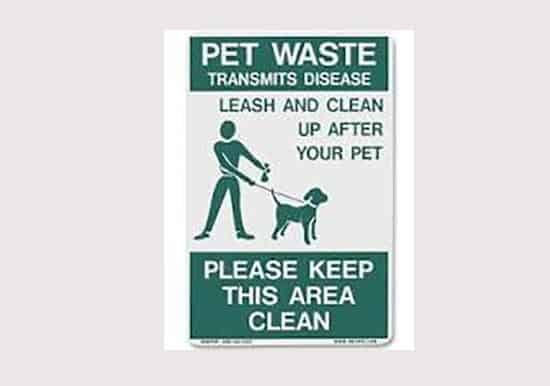Determining your companion animal’s quality of life and making the decision of when to euthanize a beloved pet may be one of the most difficult choices you must face.
It is hard to make a life-ending determination like this for someone who cannot tell you what his wishes are and yet a judgment call must be made. There are emotional issues such as guilt, grief, and uncertainty as well as financial and/or time commitment matters in choosing to treat or not treat an illness.
It can be hard to know whether the right time has come in addition to questions about what to expect and what the procedure is. The things detailed below is to help guide you through these difficult issues.
When is the Right Time?
Some pets simply become debilitated by age or disease to a point where their life quality deteriorates to an unacceptable level. This does not mean that improvement is not possible so it is important to seek counseling from your veterinarian about your pet’s condition and what may be possible to improve it.
Many medical issues that seem hopeless to a pet owner are surprisingly easy to palliate or even solve. Long-standing in-home urination problems may boil down to a bladder infection that can be resolved with antibiotics or sphincter tightening remedies. Arthritis medication can yield great improvement in mobility. Unhealing wounds may represent allergy and not cancer. Every veterinarian can tell stories of pets assumed by their owners to have terminal illness that turned out to have been easily treated problems.
It is best not to make your own assumptions about the reversibility of your pet’s condition. Have your veterinarian evaluate the pet before making your decision if possible. Find out what sort of supportive care you might need to perform as primary caregiver and what the associated expenses are. Avoid making assumptions on your own and get all the options.
Involve your veterinarian early. Find out treatment options and costs before making euthanasia decisions.
When You’ve Done all you Can: Life Quality Evaluation

As much as we hate to admit it, caregivers have limitations of what they are capable of doing and some pets are not willing to cooperate with the treatments that will help them recover. There is a point where all the love, attention, therapies, and special foods are just not enough. Saying goodbye is emotionally devastating enough without having to suffer through uncertainty in your decision.
Some people will tell you that you will simply “know” when it is time but this idea is not really fair. Determining someone else’s life quality is not completely intuitive. Fortunately, some criteria have been developed to help make evaluating life quality a little more definable.
- Does he still enjoy his favorite activities? The elderly pet does not necessarily need to continue chasing balls or jumping after Frisbees but he should enjoy sleeping comfortably, favorite resting spots, your company, etc
- Is your pet eating? Basically, quality life involves eating or at least interest in food. An animal that is hungry has vitality that must be considered, though this is not the only consideration.
- Is your pet comfortable? The pet should be free of debilitating pains, cramps, aches or even the psychological pain that comes from the development of incontinence in an animal that has been housebroken its entire life.
Dr. Alice Villalobos, a veterinarian who started a quality of life program for terminal pets called Pawspice, has published a scoring system for life quality called the HHHHHMM scale (see scoring system below). Having a quality of life inventory is helpful in seeing your pet’s situation in a more objective light.
After the Decision is Made
You may have some questions as to the process and if there are other options. Home hospice care is now more readily available and offer pet owners an interim choice that may be a good option for a period of time.
Should you be present for the procedure?
This is a very personal decision and there is no wrong answer. Many people simply cannot watch for emotional reasons. Others want to be sure their pet has at least one familiar family member there throughout. It is best to decide in advance which family members, if any, want to be there.
We all want to think of euthanasia as a gentle slipping into death much like falling asleep. While every effort is made to approximate this vision, some things to know are: your companion animal will probably not close its eyes, occasionally there is a final twitch or gasp. Some animals will urinate or release other body fluids as they pass and their muscles relax. This does not mean they have any feeling, but it can be unnerving to an owner that isn’t prepared.
That said, the euthanasia process can be very humane. Often a tranquilizer or human induction drug is given by intravenous injection, which will put your pet into an unconsciousness or anesthetic plane. After this, the euthanasia solution is given, which is typically a barbiturate overdose. The entire process is usually less then two minutes.
Aftercare
After the procedure is over, there are some options regarding your pet’s remains. In some municipalities, city ordinances preclude burying pets at home. Otherwise, a cremation service is used. Typically you can choose between a group cremation and an individual one. In a group cremation, you do not receive any ashes. An individual one will cost more, but you will have your pets’ ashes.
Quality of Life Scale
Dr. Alice Villalobos, the veterinarian who started Pawspice, a quality of life program for terminal pets, has published a scoring system for life quality called The HHHHHMM scale. The letters stand for: Hurt, Hunger, Hydration, Hygiene, Happiness, Mobility, and More Good Days than Bad.
| Quality of Life Scale: The HHHHHMM Scale | |
| Pet caregivers can use this Quality of Life Scale to determine the success of pawspice care. Score patients using a scale of 1 to 10, 10 being the highest quality of life. | |
| Score | Criterion |
| 1-10 | HURT – Adequate pain control, including breathing ability, is first and foremost on the scale. Is the pet’s pain successfully managed? Is oxygen necessary? |
| 1-10 | HUNGER – Is the pet eating enough? Does hand feeding help? Does the patient require a feeding tube? |
| 1-10 | HYDRATION – Is the patient dehydrated? For patients not drinking enough, use subcutaneous fluids once or twice daily to supplement fluid intake. |
| 1-10 | HYGIENE – The patient should be brushed and cleaned, particularly after elimination. Avoid pressure sores and keep all wounds clean. |
| 1-10 | HAPPINESS – Does the pet express joy and interest? Is the pet responsive to things around him or her (family, toys, etc.)? Is the pet depressed, lonely, anxious, bored or afraid? Can the pet’s bed be close to the family activities and not be isolated? |
| 1-10 | MOBILITY – Can the patient get up without assistance? Does the pet need human or mechanical help (e.g., a cart)? Does the pet feel like going for a walk? Is the pet having seizures or stumbling? (Some caregivers feel euthanasia is preferable to amputation, yet an animal who has limited mobility but is still alert and responsive can have a good quality of life as long as caregivers are committed to helping the pet.) |
| 1-10 | MORE GOOD DAYS THAN BAD – When bad days outnumber good days, quality of life might be compromised. When a healthy human-animal bond is no longer possible, the caregiver must be made aware the end is near. The decision needs to be made if the pet is suffering. If death comes peacefully and painlessly, that is okay. |
| *TOTAL | *A total over 35 points represents acceptable life quality |
Adapted from Villalobos, A.E., Quality of Life Scale Helps Make Final Call, VPN, 09/2004, for Canine and Feline Geriatric Oncology Honoring the Human-Animal Bond, by Blackwell Publishing, Table 10.1, released 2006.


